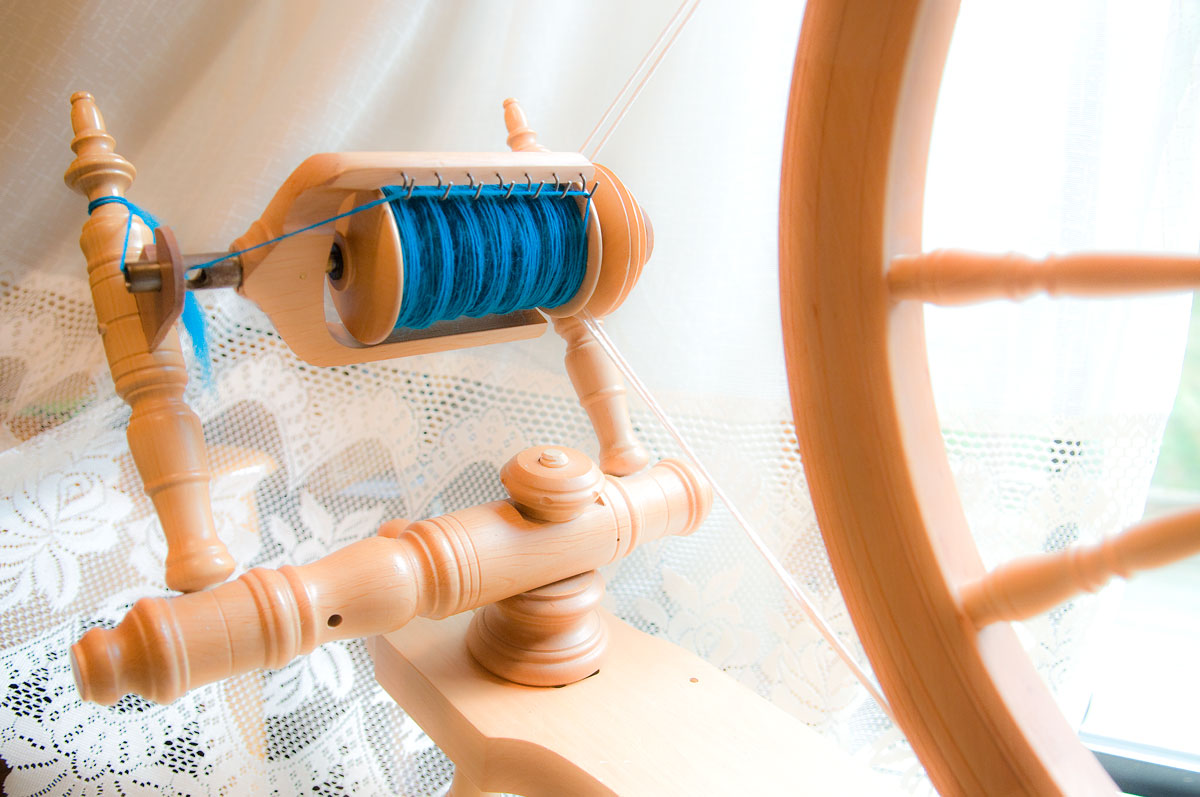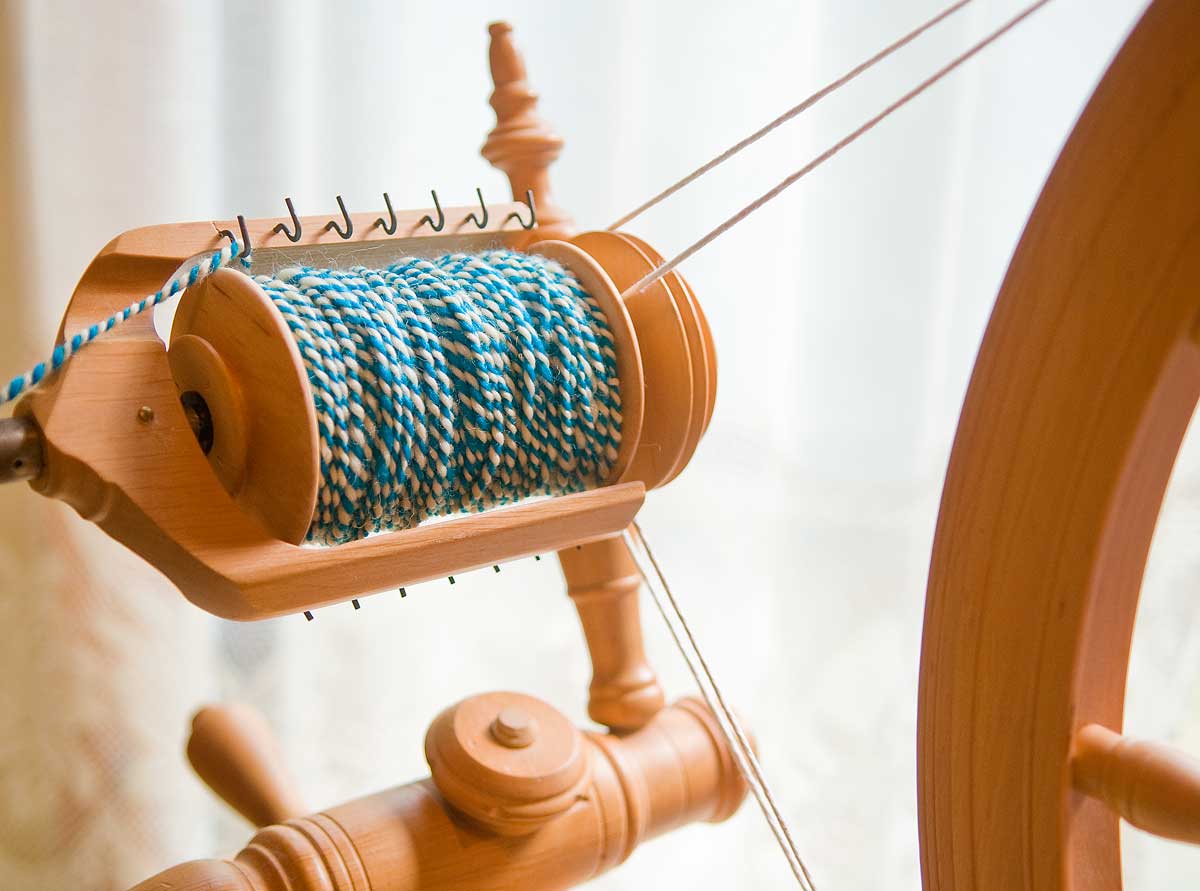This project was my first complete project back in the early days that I did almost from scratch. It included the spinning all by myself (the very first yarn I spun since my training at The Woolery a few months prior) and knitting with my homespun yarn. This was my first real spinning project – not my first knitting project, though. As a kid, I learned to knit from my grandmother and from my neighbor. I leaned how to crochet from my mom. I was seven when I started and I haven’t stopped ever since.
As a knitter, I always wanted to have a full control of the type of yarn I am using for my projects. Naturally, it’s very difficult to find the exact composition of natural fibers in my yarn, yarn thickness, type of yarn, color, price, and many other factors that affect the final article I am making. Having said that, spinning my own yarn had always been my secret dream.
That year, my dream came to fruition. The way it started, was quite shocking for us. It all started with our shed fire on the New Year’s night in January 2018. A lot of expensive farm equipment, animal feed, tools, etc. were lost in that fire. It was a devastating experience for my family. With time, we had to move on and continue living as normally as possible. We cleared our yard from the fire remnants and recovered from the effects of that horrible disaster. As a part of the recovery, we decided to make a purchase for each of us – something that would make us happy. I chose to buy a spinning wheel.
Elizabeth 2 by Ashford arrived at my door in January 2018. Although elegant and beautiful construction, the wheel look extremely intimidating to me. I had no idea how to start learning. I searched for YouTube videos and spinning classes in my area. To my great surprise, the famous Woolery is within a mere forty-minute drive from my house! We lived in the country, and the closest grocery store was farther away than The Woolery. I took the beginner class at The Woolery and I am so glad I did! Nancy, the instructor, has a specific teaching method that really helped me master the entire spinning process very quickly.
My choices and possibilities have multiplied infinitely with the new skill of preparing fleece and spinning wool into yarn. Since I learned how to spin, I made a commitment to spin almost every day and definitely every week. Subsequently, I have spun many hundreds of yards of fiber (may be even miles, I am not sure). And I made many articles of clothing with my hand spun yarn.
This little project was my very first piece of work that started from spinning my own yarn and finished as a final article of clothing.
Romney wool is one of the easiest types to spin for beginners. These rovings of white and blue Romney fleece were purchased at the local yarn shop.
The transformation of wool from fleece to the final article had began.

I ended up using my second spinning wheel, Kromsky Symphony with a double treadle for this project. And I am glad I did. The double treadle gave a good control of the drive wheel and made my first big project very easy to accomplish as a beginner.

I spun two bobbins of white and blue single (not plied) yarns paying very close attention to the thickness of my fibers. Nevertheless, I made a typical beginner’s mistake – I overspun my yarn.

This mistake gets corrected to some degree during plying when the yarn unwinds a little. This is because when we ply yarns, the plying direction is opposite to spinning direction. For example, spinning occurs clockwise direction forming a z-twist. While plying happens in counterclockwise direction resulting in an s-twist. You can easily see the s-twist in the pictures below because it has contrasting fibers.
Freshly spun yarn should not be plied the same day. The yarn rests on the bobbins for 24 hours to set the spinning tension.
After the waiting period I made a two-ply yarn.
Below is a picture of my very first plying project. I was happy with the result because the final yarn tension was lessened by the plying. And my overspun strands were compensated.

After plying, my yarn became much more relaxed. But, it’s not ready for knitting yet.
The next step was to remove the yarn from the bobbin and wind it into a skein in preparation for washing. A wool tool called niddy-noddy is used for that purpose.

The next step is to wash and dry the yarn. I slipped the skeins off the niddy-noddy and washed them in hot soapy water. Washing of the wool is very different from regular laundry. Wool is placed in hot soapy water to rest there for 15-20 minutes. Wool is then removed and gently squeezed of water. No agitation in the wash and no wringing is allowed. Otherwise, the wool will felt.
After the wash, I rinsed the wool in hot water a few times. I use a small amount of vinegar in the last rinse to remove any residual alkali soap and to condition the wool. I used my drying rack to hang the washed skeins to air dry. Sometimes, I use weights for the drying process. But I didn’t use any weights that time. I let the wool dry naturally. To my surprise, the yarn became very relaxed and not over-twisted at all after washing and air-drying.

My next step was to wind the wool into balls. A couple of wool contraptions are used for this. The swift stretches out like an umbrella to hold the skein around its “waste.” And the yarn ball winder creates nicely wound balls of wool.
I could’ve used my sturdy sewing desk for this purpose. But I actually preferred to use my second floor railings for this job. The umbrella swift opens very widely, and I sure don’t want it to catch on anything or anybody while I wind the yarn.

The amount of fleece rovings in the basket above produced these three balls of tightly spun and rather thick yarn.

Since this project I spun miles of yarn. Every new project hones the skill. But, I think, this wasn’t too bad for a newbie.
I used long wool for my first spinning project. This type of wool is easy to spin, but the resulting yarn is coarse. Long wool is usually not fine like Angora or Merino. The benefit of long wool is that it’s very durable. In addition I used a worsted spinning method making the yarn even stronger.
The yarn that is so thick can be good to make socks, outer ware, or mittens. I decided to knit a pair of mittens since longevity is important. The tight twist of the thread adds to the durability even more.
I hand-knitted this pair of mittens while having a social breakfast with my family on a weekend. I could definitely see the uneven areas of yarn and I knew where I needed to improve.


My first project gave me an amazing sense of satisfaction seeing the shapeless and fluffy wool transforming into an article of clothing.
Thank you for reading!

















